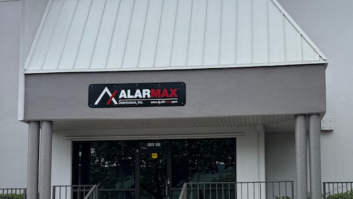Troy, Mich. – Vendors generally lauded Kmart’s decision last week to seek chapter 11 bankruptcy protection, and breathed a sigh of relief after it secured a $2 billion debtor-in-possession line of credit from Credit Suisse First Boston, Fleet Retail Finance, General Electric Capital and JPMorgan Chase Bank.
Nevertheless, given the daunting challenges that remain for the nation’s No. 2 discount chain, their optimism over the outcome of the largest retail bankruptcy in history was guarded.
As a Kodak spokesman noted, ‘We remain committed to Kmart through their restructuring; they are still a valued customer. We do not expect this to have a material effect on Kodak but we are placing products already shipped to Kmart on a `doubtful accounts’ status, reflecting the uncertainty of their situation.’
Activision, which stopped shipping the beleaguered discounter late last month, also said the bankruptcy would have no material impact on earnings results. ‘We have been monitoring Kmart’s financial situation for several months now,’ said president/COO Ron Doornink. ‘As part of our prudent planning, we maintain credit insurance and conservative reserve and credit policies specifically for these types of situations.’
Nintendo of America, Kmart’s 14th largest creditor, echoed that the bankruptcy would have only a minor impact on its earnings for the current business year through March 31.
Likewise, Royal Appliance, maker of Dirt Devil floor care products, has ‘adequately reserved for any uncollectable amounts relating to our Kmart receivables,’ said president/CEO Mike Merriman, although the bankruptcy may still negatively impact its first-quarter results. ‘Kmart is in a tough retail environment, but we’re hopeful that they will take the necessary steps to successfully reorganize,’ he said.
Similarly, music distributor Handleman, which counts on Kmart for 35 percent of its total revenue and is owed $63.6 million by the chain, said its third-quarter results would likely be hurt by the bankruptcy. Offered CEO Stephen Strome, ‘We’re working closely with Kmart to do whatever is needed to help them accomplish their objectives.We will make decisions that reflect our support of Kmart in addition to ensuring our company’s ongoing performance. As Kmart’s plans are announced, we will support them in their efforts to return to profitability.’
According to Tony Mirabelli, senior VP for Cobra, Kmart’s chief FRS, ‘Kmart will continue to be a very important customer to us. It’s unfortunate that it had to file as it has, but at the moment, the biggest problem we have is that we don’t have any other information from them regarding the next steps. So its difficult to say anything other than we hope to continue to work with them.’
Recoton, which does 3 percent of its total volume through Kmart, said it’s owed about $6.9 million by the discounter, of which $2 million is covered by insurance. Chairman Bob Borchardt said the bankruptcy would not have a material impact on Recoton’s long term profitability, and that the company ‘supports Kmart during these difficult times and [is] hopeful that it will successfully address its financial and operational challenges.’
Kmart’s leading name-brand A/V suppliers declined comment.
The chain, which ranked 10th on TWICE’s Top 100 CE Retail Registry with $2.6 billion in electronics sales in 2000, said last week that it will reorganize on a ‘fast-track basis’ with the goal of emerging from bankruptcy by 2003. At least for the short term, all 2,114 Kmart stores will remain open, its return policies will remain in effect, and the company’s credit cards, checks, gift certificates, store credits will be honored.
What’s more, its recently announced plans to revamp its electronics departments and expand the CE product mix appear unchanged. Said Cobra’s Mirabelli, ‘Kmart had started to restructure its [CE] merchandising and planograms and we are actively working with them on this.’
In announcing the filing, Kmart’s embattled CEO Charles Conaway said, ‘We are committed and determined to complete our reorganization as quickly and as smoothly as possible, while taking full advantage of this chance to make a fresh start and reposition Kmart for the future.
‘We deeply regret any adverse effect [the bankruptcy] will have on our associates, vendors and business partners. But after considering a wide range of alternatives, it became clear that this course of action was the only way to truly resolve the company’s most challenging problems.’
According to Kmart, those include a desiccated cash flow following a dismal fourth quarter; the downgrading of its bonds to junk status; and the loss of supplier confidence. Chief among the latter was Fleming, Kmart’s sole grocery supplier, which had halted deliveries after the retailer missed a weekly payment, but has since resumed shipments.
‘Kmart’s debtor in possession financing gives it the critical liquidity needed to fund its operations during the reorganization process,’ said Fleming chairman/CEO Mark Hansen. ‘Additionally, Kmart’s reorganization can be an opportunity to close under-performing, high-cost-to-serve stores and redirect capital toward efficient, highly productive discount stores and supercenters.’
Less clear is the long-term commitment of Martha Stewart, whose private label home fashions had helped keep Kmart afloat, and who could invoke a contractual bankruptcy clause allowing her to take her licensed line elsewhere.
In a prepared statement, Stewart said that the relationship would continue ‘for the foreseeable future,’ with the understanding that Kmart ‘will take steps to ensure that we receive payment as fully and promptly as possible’ on accounts receivable totaling about $13 million. ‘We remain optimistic that Kmart.will ultimately emerge from this situation as a stronger, more competitive company,’ she said.
Stewart’s $13 million bill palls by comparison to those of Kmart’s top unsecured creditors, which include Buena Vista Home Video ($56,275,198), Nintendo of America ($44,913,692), Mattel Toys ($44,120,598) and Twentieth Century Fox Home Entertainment ($34,219,742).
James Adamson, who succeeded Conaway this month as Kmart’s chairman, noted that vendors would need to resume normal trade terms and full merchandise shipments within the first 60 days of the reorganization case in order to receive a second lien on Kmart’s collateral for their post-petition accounts payable. ‘With that support, and with the protection of chapter 11, we are confident the company will move forward in a better position to restructure for the future,’ he said.
Analysts were less certain, citing Kmart’s ill-defined place in the discount pantheon, the superior execution of chief rivals Wal-Mart and Target, and the need to close at least a quarter of its stores.
What impact would store closures have on the CE industry? According to the arithmetic of Aram Rubinson, a retail analyst with UBS Warburg, shutting even 400 units would be roughly equivalent to losing 58 Best Buy and Circuit City locations, based on Kmart’s 4,044-square-foot CE departments. The major beneficiaries, he suggests, would be CE specialty chains, although much of the lost market share may ultimately be absorbed by the hundreds of new Wal-Mart and Target locations planned for this year and next.
Kmart’s bankruptcy could also be the first in a flood of retail filings, warned H. Jason Gold, managing principal of Gold Morrison & Laughlin PC, a Tysons Corner, Va.-based law firm. ‘There are indications that retail chains large and small that were struggling in the slowed economy and that were further impacted by the events of September 11th will be failing,’ he said, citing the ‘high level of activity among reorganization professionals who are trying to keep up with all the work.’
Adamson, an outside director and turnaround specialist who got the Denny’s fast food chain back on its feet, and newly appointed executive VP/chief restructuring officer Ronald Hutchinson, were brought in to guide Kmart through its reorganization and to help senior management rebuild and reposition the business.
To accomplish that, the company says it plans to:
- Close unprofitable or underperforming stores this year and terminate money-losing sub-leases;
- Reduce annual expenses by an additional $350 million by reorganizing, cutting staff, consolidating offices, and ‘other actions’;
- Offer exclusive brands that will differentiate Kmart from its competitors;
- Optimize the supply chain to maximize efficiencies and service capabilities;
- Invest in critical technology and standardized information technology platforms.
Conaway, a retail wunderkind who helped revitalize the CVS pharmacy chain, had already launched several of the initiatives since taking the helm in 2000. But whether Kmart can buy enough time to overhaul its inventory control systems and establish a niche between low-price leader Wal-Mart and fashion-focused Target remains to be seen.













